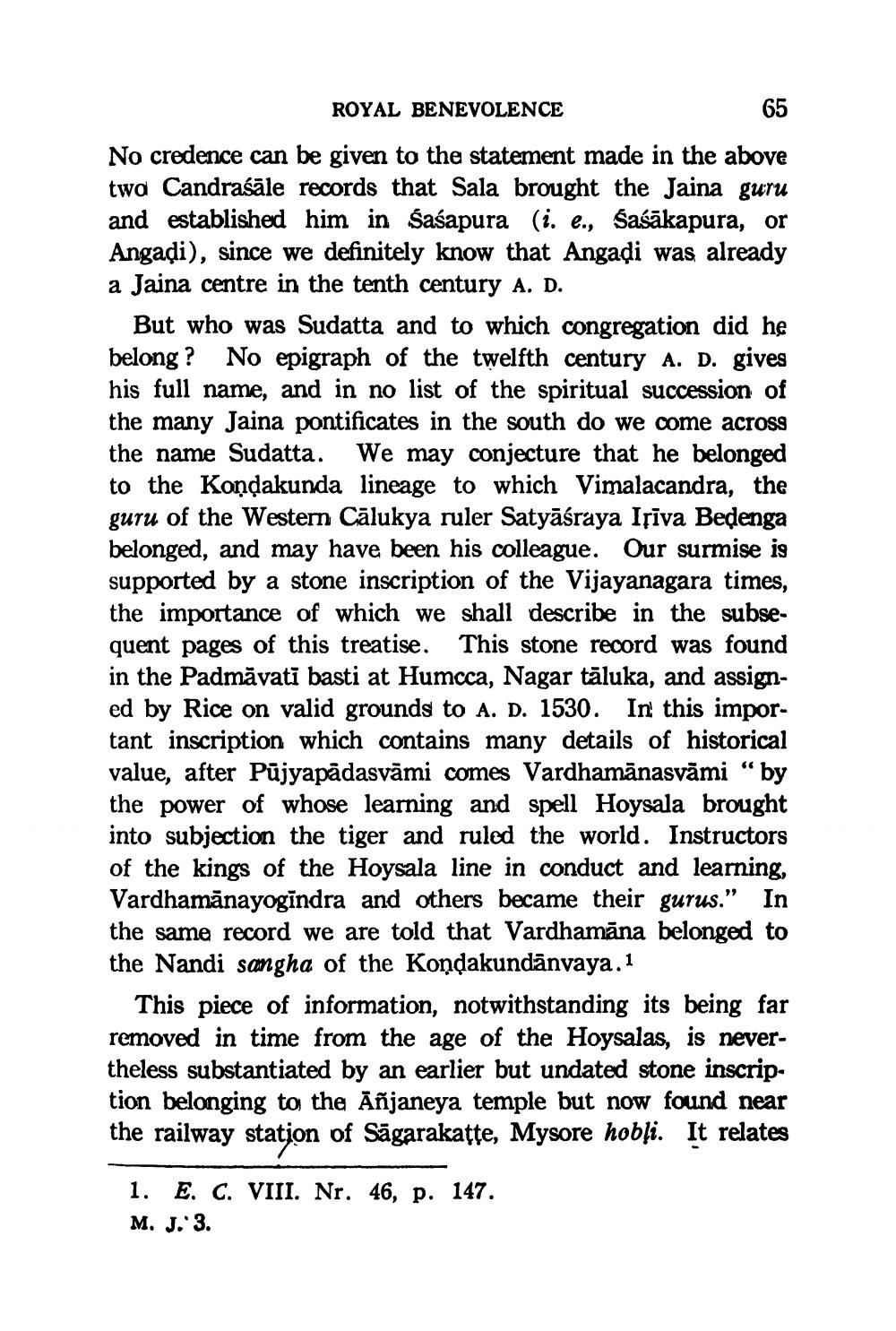________________
ROYAL BENEVOLENCE
65 No credence can be given to the statement made in the above twa Candraśāle records that Sala brought the Jaina guru and established him in Śaśapura (i. l., Śaśākapura, or Angadi), since we definitely know that Angadi was already a Jaina centre in the tenth century A. D.
But who was Sudatta and to which congregation did he belong ? No epigraph of the twelfth century A. D. gives his full name, and in no list of the spiritual succession of the many Jaina pontificates in the south do we come across the name Sudatta. We may conjecture that he belonged to the Kondakunda lineage to which Vimalacandra, the guru of the Western Cālukya ruler Satyāśraya Isīva Bedenga belonged, and may have been his colleague. Our surmise is supported by a stone inscription of the Vijayanagara times, the importance of which we shall describe in the subsequent pages of this treatise. This stone record was found in the Padmavati basti at Humcca, Nagar tāluka, and assigned by Rice on valid grounds to A. D. 1530. In this important inscription which contains many details of historical value, after Pūjyapadasvāmi comes Vardhamānasvāmi "by the power of whose learning and spell Hoysala brought into subjection the tiger and ruled the world. Instructors of the kings of the Hoysala line in conduct and learning, Vardhamanayogindra and others became their gurus." In the same record we are told that Vardhamāna belonged to the Nandi sangha of the Kondakundānvaya.1
This piece of information, notwithstanding its being far removed in time from the age of the Hoysalas, is nevertheless substantiated by an earlier but undated stone inscription belonging to the Añjaneya temple but now found near the railway station of Sāgarakațțe, Mysore hobļi. It relates
1. E. C. VIII. Nr. 46, p. 147. M. J. 3.




